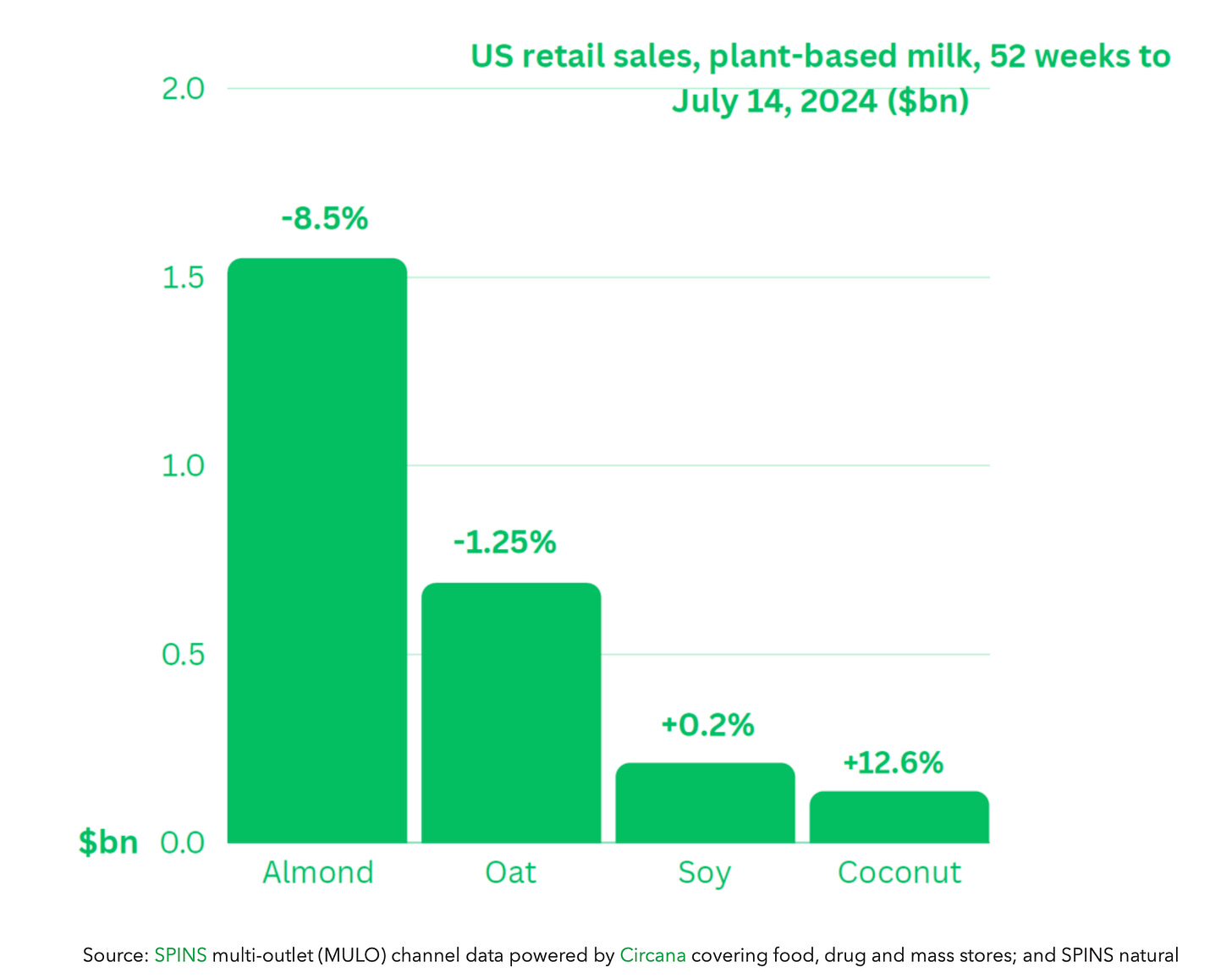What is Founder Mode?
California defines Regenerative Ag, Protein-ification is happening, and do you need to be certified Seed Oil Free?
3-min read
California defines Regenerative Agriculture
I’ve been reporting on this since last year, when the CDFA went about defining regenerative agriculture for state policies and programs. Led by President Don Cameron, the recommendation went to the California State Board of Food and Agriculture yesterday. Where things landed is this set of target outcomes —
In the 90-min session, these were the top concerns and questions answered:
the definition does not establish a statewide certification program
is not tied to organic certification
is meant to qualify as many farmers as possible into future yet unknown regenerative farming policies and programs
enforcement, verification and reporting will be up to the individual programs
Building and scaling a startup and what is “Founder Mode”?
I’m reading New to Big, a how-to book for BigCos on simulating a startup inside their companies. The book gives BigCos the formula to a permanent “operating system” for growth, which starts with adopting a founder-like mentality, and culminates with placing teams into co-founder roles.
And then this week Paul Graham (Y Combinator) wrote an essay, Founder Mode, coining a management style for scaling a startup — which I predict we will be hearing a lot more of as a method for BigCo growth (thanks to Emily Sundberg for bringing this to my attention)
Founder Mode is as opposed to traditional BigCo style of Manager Mode, when the CEO engages only with direct reports. As explained in the essay, Founder Mode is like when Steve Jobs invites the most important people at Apple to a retreat, and it’s not the top people on the org chart.
Interesting that the new thinking around startups — both creating one and scaling one — have converged on the founder vs manager style.
In my view the defining principle of founder mentality is ownership. New To Big is about organizing around a founder culture without actual ownership, by adopting the components such as autonomy, agility, creativity, and safe-to-fail.
Protein-ification is the future of the protein trend
The amount of square footage dedicated to protein supplements is pretty insane. The entire front island at Costco is dedicated to protein.
With people eating less but wanting more, supplementing with powder proteins will give way to fortification in all food categories.
It’s already happening. There are protein enhanced products all over the store in different formats. Even pasta sauce.
Your brand may be fortifying with protein already.
Taking this to the limit, the food-as-medicine movement could very well spur the FDA to enact a standard of identity for future foods deemed deficient in protein.
It’s been done before, like with iodine supplementation in salt, and folic acid supplementation in macaroni. Food fortification has a long history in the U.S. as a systematic approach to correct identified nutrient deficiencies in the population.
All that would have to happen is the US Recommended Daily Allowance for protein would have to be upped, and a majority of the population deemed deficient.
Global Protein Ingredient Market is projected to increase at a CAGR of 6.56% from 2024-2030
If you don’t believe me about protein being in everything - WSJ
There is now a Seed Oil Free certification
I had an honest convo with CEO Jonathan Rubin of the Seed Oil Free Alliance about do we really need another certification to put on pack when we can just read the ingredient label. He informed me consumers don’t know what constitutes as a seed oil, and not only that — there is a fair amount of adulteration in oils (ahem, avocado oils !), so supplier integrity is of question. His org does lab testing as part of certification.
Fees are based on gross annual revenues, starting at $1600 annually. Get in touch.
Plant-based milk sales are down 5.2% in the US
Mass market brands like Silk and private label have been driving declines. New launches on the premium side of the category are trying to recapture lapsed consumers who, rejecting poor nutrition and ingredients (including oils, gums and fillers) went back to real dairy.
Happy September!
All my best,
Jennifer













Hi Jennifer, thanks for your coverage! Quick clarification, our licensing fee pricing starts at $400 (for a company with less than $62,500 revenue), as we want it to be accessible to early-stage brands and small businesses.